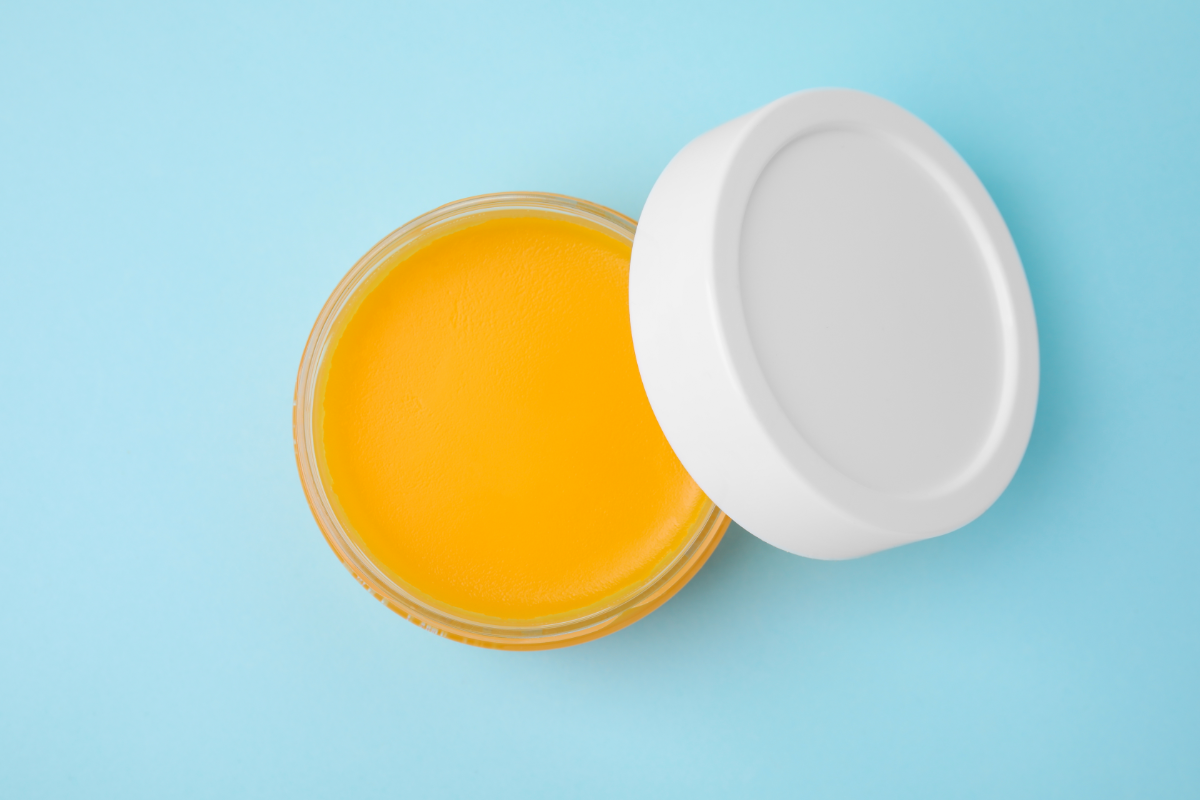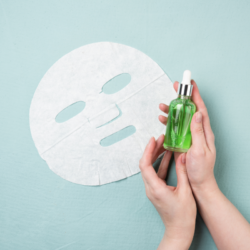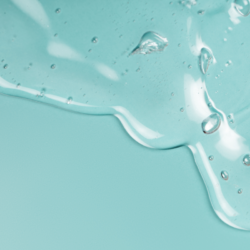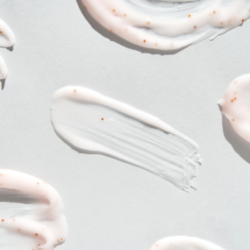Slugging is a method skin care straight from South Korea that is gaining in popularity. This technique involves applying a thin layer of petroleum jelly, more commonly known as Vaseline, to the skin to retain moisture and help repair the skin. This guide explores the benefits of slugging for the skin and uses scientific data to validate its effects.
The benefits of slugging for the skin
The term ‘slugging’ can be misleading, but in reality it refers to a very simple skincare method that delivers noticeable results. The key ingredient here is Vaseline. The use of petroleum jelly in skincare is not new; it’s a compound that has been extensively studied by dermatologists studied for a long time by dermatologists and scientists the world. Research shows that petrolatum has excellent moisturising properties that can be particularly beneficial in maintaining healthy skin.
Mechanisms of action of petroleum jelly
The main function of petroleum jelly is to act as an occlusive barrier on the skin. This means that it forms a film that prevents transepidermal water loss (TEWL). TEWL is an essential factor in skin health; excessive water loss can lead to dry, flaky skin and even more serious dermatological conditions such as eczema. Petrolatum helps to retain this moisture, allowing the skin to retain its hydration.
In addition, the Mayo Clinic Minute highlights the versatility of petroleum jelly, indicating that it is an optimal choice for the treatment of a variety of skin conditions, including chapped lips and dry skin. In addition, a study has shown that petroleum jelly can reduce the risk of eczema in newborns, thanks to its composition, which is chemically similar to the proteins in our skin(source: Mayo Clinic).
Impact on skin repair
One of the least discussed but most essential properties of petrolatum is its potential to accelerate skin repair. The occlusive barrier created by petrolatum creates an environment conducive to healing. This is particularly useful in the treatment of small abrasions, cuts or even chapped skin.
Finally, according to research published by theAmerican Academy of Allergy, Asthma & Immunology, petroleum jelly stimulates the production of antimicrobial peptides and key markers of epidermal barrier differentiation. These findings shed light on the beneficial molecular responses of petroleum jelly in skin barrier-deficient conditions such as atopic dermatitis and post-operative care(source: PubMed)
Selecting the right skin care product
It is essential to choose a good quality petroleum jelly to obtain the best results. Choose products that do not contain additives or fragrances, as these can irritate the skin or reduce the product’s effectiveness. Read labels carefully and, if possible, consult a dermatologist for a personalised recommendation.
Precautions and contraindications
Although petrolatum is widely considered safe, it’s always a good idea to take precautions. Before starting a slugging routine, it’s a good idea to have a skin test to check for any allergic reactions. In addition, those with a history of skin problems such as acne should exercise caution, as an occlusive barrier could potentially worsen their condition.
It’s also important to note that slugging is not suitable for all skin types. People with oily or acne-prone skin should be cautious, as this method could aggravate these conditions. Similarly, slugging should not be performed on infected skin(source: Cleveland Clinic).
How does slugging work?
Slugging is a skincare technique that has gained popularity for its impressive moisturising effects, mainly thanks to its key ingredient, petroleum jelly. But how can this simple compound have such an impact on the skin? The answer lies in its occlusive action and consequent effects on moisture retention and cell regeneration.
For optimum effectiveness, we recommend cleansing and moisturising the skin before applying Vaseline. Products containing humectants, which attract moisture, and emollients, which add intense hydration, are suggested. A small amount of an occlusive product such as Vaseline is enough to create an effective barrier(source: The National News).
Occlusive agent: Petrolatum
Petrolatum is a long-chain hydrocarbon with hydrophobic properties. In other words, it repels water. When applied to the skin, it acts as an occlusive agent, forming a barrier that is impermeable to water. This characteristic is crucial to its effectiveness in retaining moisture in the skin.
Moisture retention and the skin barrier
Petrolatum’s main role in slugging is to retain moisture within the layers of the skin. By forming a barrier, it considerably reduces transepidermal water loss, which is essential for maintaining skin hydration. Well-hydrated skin is better able to protect itself against external irritants, infections andother skin conditions.
In fact, a detailed study in theJournal of the American Academy of Dermatology confirms the exceptional moisturising properties of petroleum jelly and refutes a number of misconceptions about it. This research highlights its wide-ranging usefulness in dermatology, particularly as an effective moisturiser(source: PubMed).
An environment conducive to healing
Not only does petrolatum lock in moisture, it also creates an environment conducive to healing and cell regeneration. By reducing water loss, the skin can maintain an optimal level of hydration, which is essential for the healing process. Studies have shown that applying petrolatum to wounds can accelerate the tissue repair process.
Interactions with other skin care products
One of the advantages of slugging is that it can be integrated into your existing skin care routine. Petrolatum can be applied after your usual serums and moisturisers to seal in all the benefits. However, it is essential to note that petrolatum can make the skin impervious to other products. It is therefore recommended that you apply it as the last step in your routine.
Time aspects of slugging
Although petrolatum is effective at retaining moisture, slugging is often recommended at night. This is because the occlusive barrier can make the skin slightly shiny or oily, which is generally undesirable during the day. What’s more, the night is a time when the skin is actively regenerating, which makes slugging even more effective.
Finally, to protect your pillow, remember to cover it with a towel. In the morning, cleanse your face to remove any Vaseline residue. This morning cleansing is essential for healthy skin, which accumulates dead cells, oils and bacteria(source: Cleveland Clinic).
Who is slugging for?
Slugging has become a widely discussed skincare technique, but it’s important to note that it’s not universally suitable for everyone. The effectiveness of this method depends on a number of factors, including skin typeand specific skin conditions. However, certain populations are more likely to benefit from this practice than others.
Dry and dehydrated skin
Individuals with dry or dehydrated skin are among the biggest beneficiaries of ‘slugging’. By acting as an occlusive agent, petrolatum retains moisture within the skin, helping to restore and maintain optimal hydration levels. For these people, ‘slugging’ can be a practical and effective solution to skin dryness.
Specific dermatological conditions
Conditions such as eczema and psoriasis or rosacea (although some cases of rosacea are aggravated by the application of occlusive skincare products) are often associated with an impaired skin barrier and increased transepidermal water loss. Slugging can therefore be used as a complementary treatment to help restore skin barrier function. However, it is imperative to consult a dermatologist before incorporating ‘slugging’ into a skincare routine for these conditions, as there may be contraindications or interactions with drug treatments.
Sensitive and reactive skin
People with sensitive or reactive skin can also benefit from ‘slugging’, especially when exposed to dry or cold environments that exacerbate skin dryness. The occlusive barrier formed by petrolatum can protect the skin from external aggressors, such as wind and low temperatures, which tend to dehydrate the skin.
FAQ
- Is slugging suitable for all skin types? No, this method is especially recommended for dry and sensitive skin.
- Does slugging block the pores? Normally not. Petrolatum is non-comedogenic.
- Can I use other products with slugging? Yes, but it is advisable to consult a dermatologist for a personalised skin care plan.







